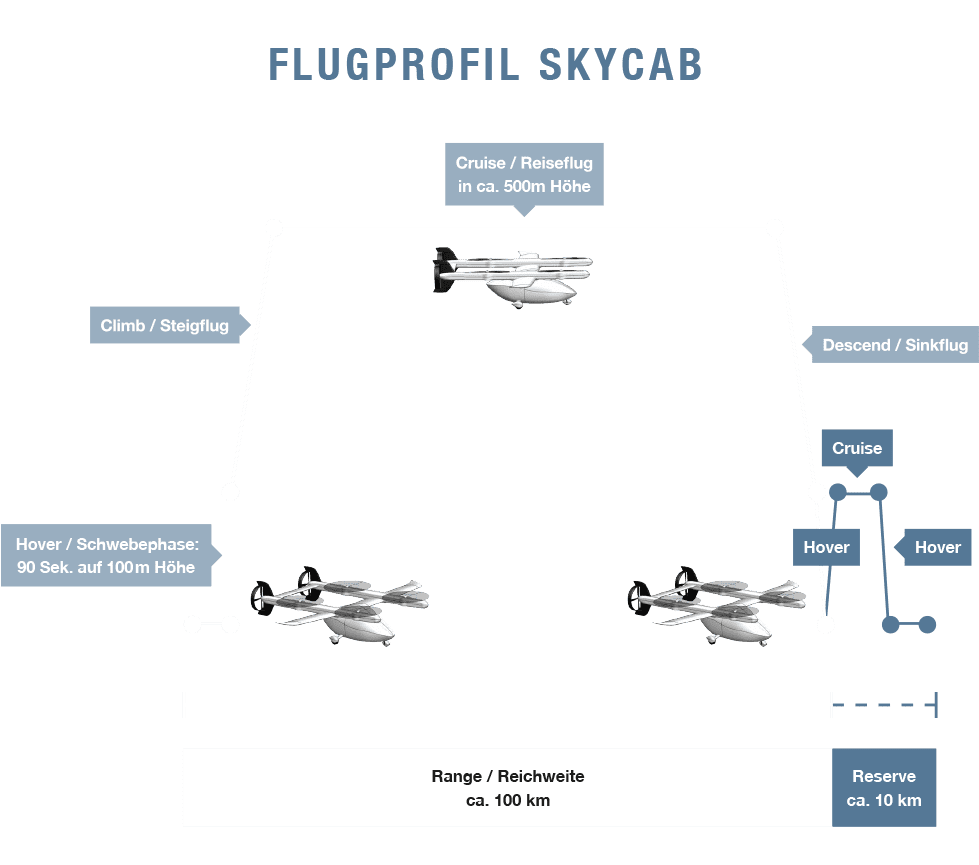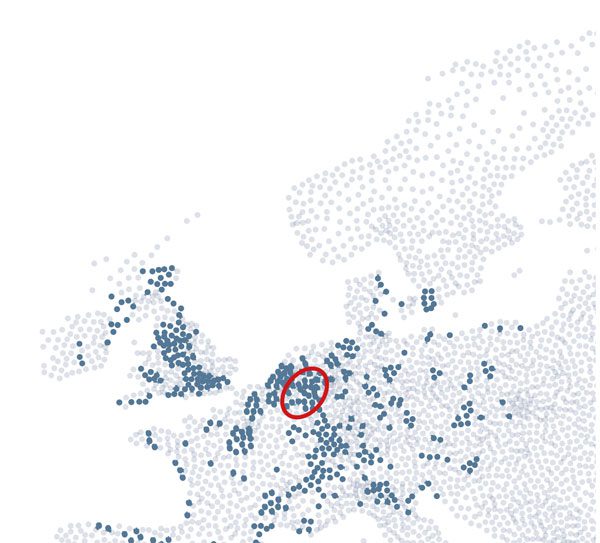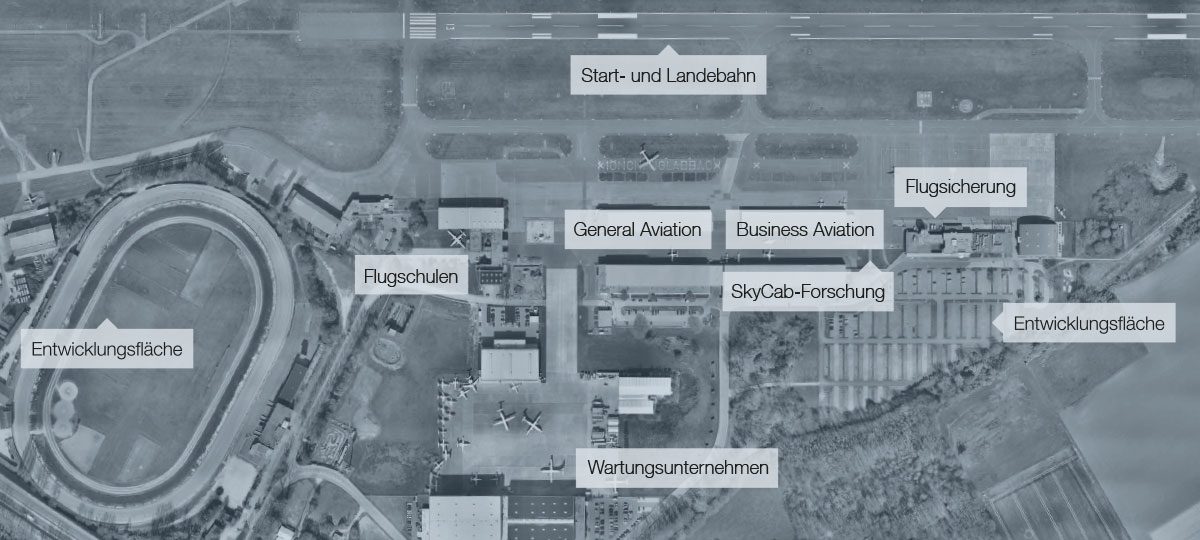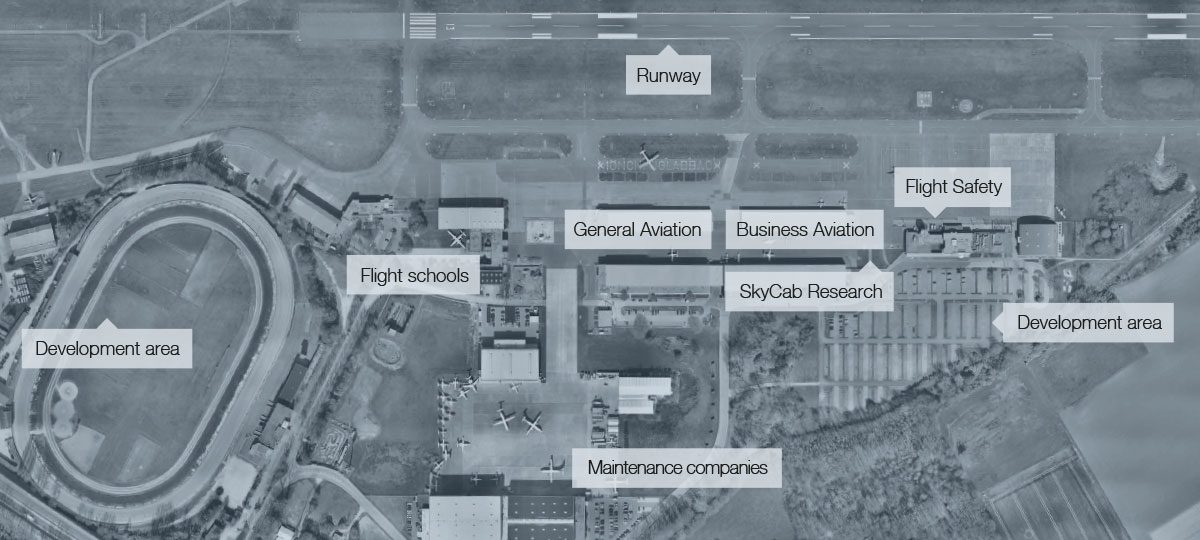© MGL_Braunwagner
SkyCab-Forschung am MGL
Nachhaltiger Beitrag zu emissionsfreiem Fliegen
Science. Not fiction.
Science. Not fiction.
Im Dienst von Mensch, Natur und Gesellschaft
Cargo & Logistik ›
Cargo & Logistik
Um unter anderem Leerflüge sinnvoll zu nutzen und SkyCab voll auszulasten, werden nachhaltige Cargoflüge angeboten, die v. a. den Straßenverkehr entlasten. Zusätzlich ist eine spezielle Cargo-Unit geplant, die durch die modulare Konstruktionsweise des SkyCab anstelle der Passagierkabine eingesetzt werden kann.
Medizin ›
Medizin
In dringenden Notfällen kann SkyCab Rettungshubschrauber oder Kleinflugzeuge zum Organ- oder Medizintransport unterstützen und den Notarzt schneller zum Einsatzort bringen – ein lebensnotwendiger Dienst für die Gesellschaft.
Business ›
Business
Eines der wichtigsten Einsatzgebiete des SkyCab ist die Personenbeförderung, vor allem in Ballungsbieten und für Geschäftsreisen mit einer maximalen Distanz von 100 km.
SkyCab leistet damit einen wichtigen Beitrag für eine saubere und effiziente Mobilität.
Feuerwehr, Polizei &
Katastrophenschutz ›
Feuerwehr, Polizei & Katastrophenschutz
In Katrastrophenfällen kann SkyCab Leben retten, etwa bei der Bergung von Unfallopfern oder der Evakuierung von Menschen, vor allem in schwer zugänglichen Gebieten.
Cargo & Logistik ›
Cargo & Logistik
Um unter anderem Leerflüge sinnvoll zu nutzen und SkyCab voll auszulasten, werden nachhaltige Cargoflüge angeboten, die v. a. den Straßenverkehr entlasten. Zusätzlich ist eine spezielle Cargo-Unit geplant, die durch die modulare Konstruktionsweise des SkyCab anstelle der Passagierkabine eingesetzt werden kann.
Medizin ›
Medizin
In dringenden Notfällen kann SkyCab Rettungshubschrauber oder Kleinflugzeuge zum Organ- oder Medizintransport unterstützen und den Notarzt schneller zum Einsatzort bringen – ein lebensnotwendiger Dienst für die Gesellschaft.
Business ›
Business
Eines der wichtigsten Einsatzgebiete des SkyCab ist die Personenbeförderung, vor allem in Ballungsbieten und für Geschäftsreisen mit einer maximalen Distanz von 100 km.
SkyCab leistet damit einen wichtigen Beitrag für eine saubere und effiziente Mobilität.
Feuerwehr, Polizei &
Katastrophenschutz ›
Feuerwehr, Polizei & Katastrophenschutz
In Katrastrophenfällen kann SkyCab Leben retten, etwa bei der Bergung von Unfallopfern oder der Evakuierung von Menschen, vor allem in schwer zugänglichen Gebieten.
Zahlen. Daten. Fakten.
- Besatzung: 4 Personen inkl. Pilot
- Reichweite: ca. 100 km
- Antrieb: elektrisch
- Spannweite: 12 m
- Länge: 10,50 m
- Höhe: 3,30 m
Forschungsziele am MGL
- Integration in den aktiven urbanen Luftraum mit einer heterogenen, komplexen Luftraumstruktur
- Integration in die intermodale Mobilitätsinfrastruktur der Region
- Analyse des MGL als potenzieller Start- / Landepunkt / Mobilitätshub
- Erforschung von Abläufen für Lufttaxis im Gemischtflugbetrieb
- Analyse der Synergieeffekte von Airport und SkyCab
- Anschlussprojekte zu U-Space: Ergänzung und Integration der Luftraumüberwachung durch ein Managementsystem speziell für (unbemannte) Drohnen und Lufttaxis
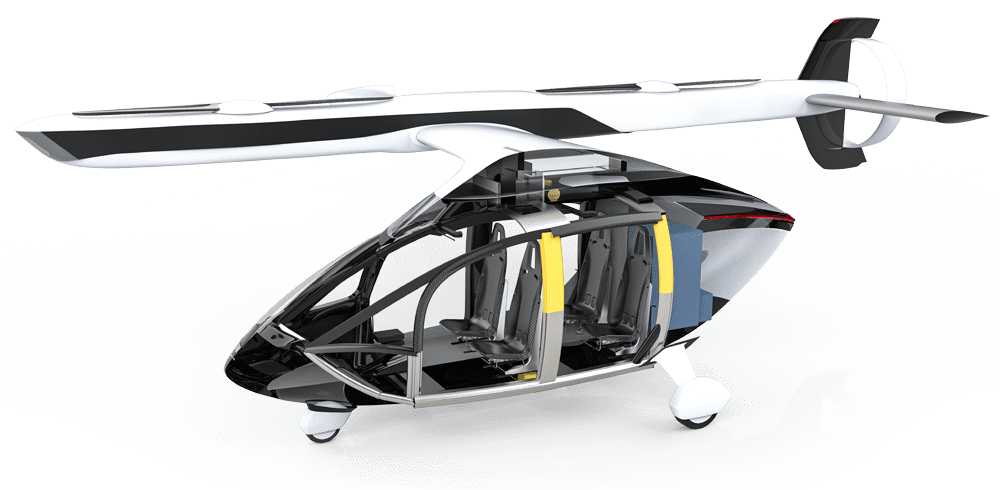
© Braunwagner
Testflug 1.0: Demonstrator-Drohne – Mönchengladbacher Stadtgebiet
Im Oktober 2021 startete eine Songbird-Drohne von Germandrones als klein-skaliertes SkyCab zum Flug um das Mönchengladbacher Stadtgebiet mit Zwischenlandung am Borussia-Stadion im Nordpark. Ziel war es, eine realitätsgetreue Flugführung des späteren Flugtaxis zu testen. Dabei ging es sowohl um flugbetriebliche Details beim senkrechten Start- und Landevorgang als auch um Fragen der Streckenführung und die sichere Integration von neuen Flugobjekten in den aktiven Luftraum.
Die Flugstrecke demonstrierte damit Elemente der Lufttaximission: Start am Mobilitätshub Airport MGL, Flug und Zwischenlandung im urbanen Raum. Eine spätere Flugtaxiroute könnte als Zubringer den Flughafen mit dem Nordpark als internationalem Gewerbepark und renommierter Sportstätte verbinden.
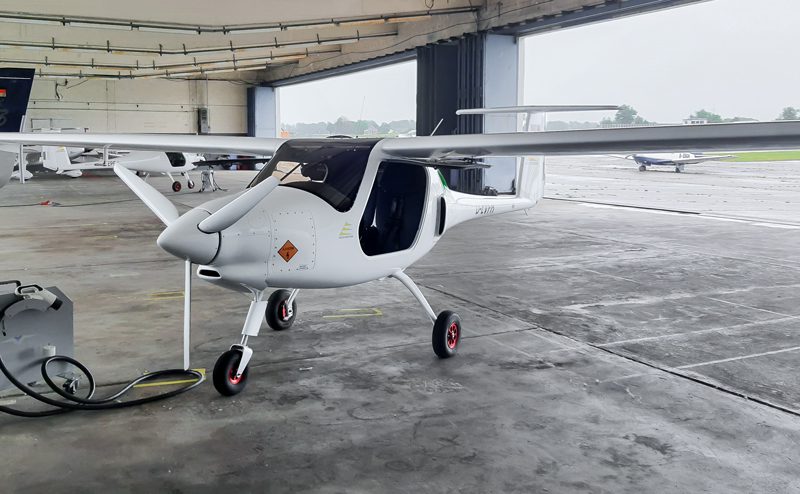
Testflug 2.0 mit Elektroflugzeug der Westflug Flight Training GmbH & Co. KG (Velis Electro)
Testflug 2.0: manntragendes Elektroflugzeug – Aachen → MGL
2022 steht der zweite Testflug an – diesmal über eine größere Distanz von Aachen nach Mönchengladbach und mit einem manntragenden Elektroflugzeug, dessen Spannweite von 10,50 Metern den Maßen des künftigen SkyCabs nahezu entspricht.
Die Strecke eignet sich aufgrund von Länge und Batterie-Reichweite gut und liefert in einem dichten Ballungsraum zudem aussagekräftige Ergebnisse für spätere Einsatzgebiete.

SkyCab research at the MGL
Sustainable contribution to emission-free flight
Science. Not fiction.
Science. Not fiction.
In the service of people, nature and society
Cargo & logistics ›
Cargo & logistics
Sustainable cargo flights are to be offered, bringing benefits such as maximizing SkyCab capacity utilization and putting empty flights to good use: cargo flights are especially useful for reducing congestion on the roads. There are also plans for a special cargo unit – thanks to the modular design of the SkyCab. This unit can be installed as an alternative to the passenger cabin.
Medical applications ›
Medical applications
In extreme emergencies, SkyCab can support rescue helicopters or small aircraft to transport organs or medical supplies and transfer emergency doctors to the scene more quickly – a vital service for society.
Business ›
Business
One of SkyCab’s main applications is passenger transport, particularly in conurbations and for business trips with a maximum distance of 100 km.
SkyCab therefore makes an important contribution to clean and efficient mobility.
Fire services, police & disaster response ›
Fire services, police & disaster response
SkyCab can save lives in disaster situations, for example as regards rescuing victims or evacuating people, especially in locations that are difficult to access.
Cargo & logistics ›
Cargo & logistics
Sustainable cargo flights are to be offered, bringing benefits such as maximizing SkyCab capacity utilization and putting empty flights to good use: cargo flights are especially useful for reducing congestion on the roads. There are also plans for a special cargo unit – thanks to the modular design of the SkyCab. This unit can be installed as an alternative to the passenger cabin.
Medical applications ›
Medical applications
In extreme emergencies, SkyCab can support rescue helicopters or small aircraft to transport organs or medical supplies and transfer emergency doctors to the scene more quickly – a vital service for society.
Business ›
Business
One of SkyCab’s main applications is passenger transport, particularly in conurbations and for business trips with a maximum distance of 100 km.
SkyCab therefore makes an important contribution to clean and efficient mobility.
Fire services, police & disaster response ›
Fire services, police & disaster response
SkyCab can save lives in disaster situations, for example as regards rescuing victims or evacuating people, especially in locations that are difficult to access.
Facts & figures
- Capacity: 4 persons incl. pilot
- Range: approx. 100 km
- Power: electric
- Wingspan: 12 m
- Length: 10.5 m
- Height: 3.3 m
Research goals at MGL
- Integration into the active urban airspace with a heterogeneous, complex airspace structure
- Integration into the region’s intermodal mobility infrastructure
- Analysis of MGL as a potential take off / landing point / mobility hub
- Research into procedures for air taxis in mixed flight operations
- Analysis of airport / SkyCab synergy effects
- Follow-on projects in U-Space: addition and integration of air traffic control via an air traffic management system specifically designed for (unmanned) drones and air taxis

© Braunwagner
Test flight 1.0: demonstrator drone – Mönchengladbach city area
In October 2021, a Songbird drone from Germandrones took off as a small-scale SkyCab for a flight around the Mönchengladbach city area with a stopover at the Borussia Stadium at the Nordpark. The aim was to test the realistic execution of a flight by a future air taxi, both with regard to operational details of the vertical take-off and landing process as well as flight route issues and the safe integration of new aerial vehicles into the active airspace.
The flight route thus demonstrated elements of the air taxi mission: take-off at the MGL mobility hub, flight and stopover in the urban area. One possible route for the future air taxi could be a shuttle service linking the airport with the Nordpark, an international commercial zone and well-known sports stadium location.

Testflight 2.0 with electric aircraft of the Westflug Flight Training GmbH & Co. KG (Velis Electro)
Test flight 2.0: manned electric aircraft – Aachen → MGL
The second test flight is scheduled for 2022 – this flight will cover a greater distance from Aachen to Mönchengladbach and will be made by a manned electric aircraft with a wingspan of of 10.5 meters, that is similar to the dimensions of the future SkyCab.
The route in a densely-populated conurbation is well suited for the test in terms of distance and battery range and will also deliver useful findings for later applications.



